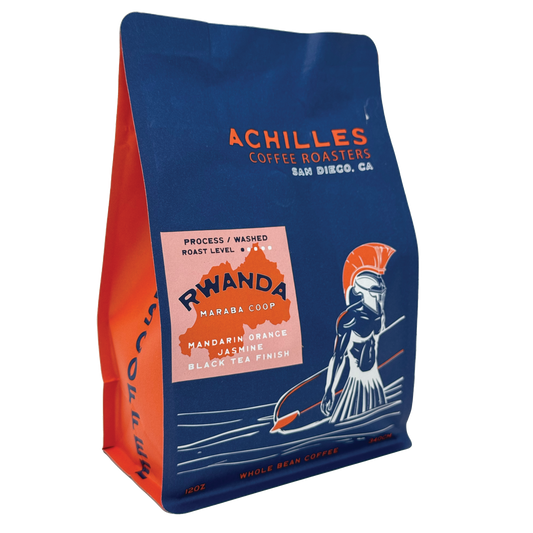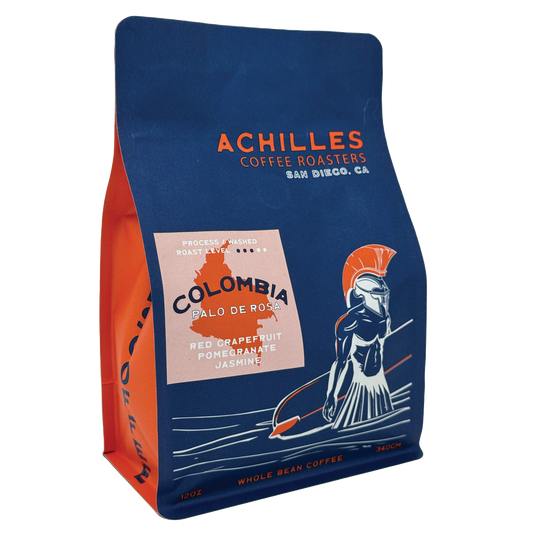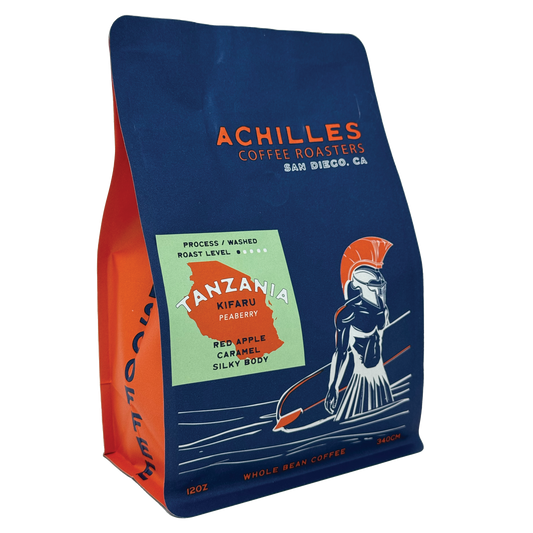When you sip a cup of coffee, you’re not just tasting roasted beans—you’re experiencing the story of where those beans were grown. Every origin carries with it a signature shaped by climate, soil, altitude, and tradition. Coffee origin plays a fundamental role in determining flavor, aroma, body, and acidity, meaning that your morning brew is as much a reflection of the earth it grew in as it is of the roaster’s skill.
Consider the volcanic soils of Central America, where mineral-rich earth contributes to smooth, chocolatey cups with hints of caramel sweetness. Contrast that with the high-altitude mountains of East Africa, where cooler temperatures slow the coffee cherry’s development, creating dense beans packed with sugars that translate into bright acidity, floral notes, and citrus-like flavors. In Indonesia, humid climates and unique processing techniques give rise to earthy, spicy profiles that are bold and complex.
Understanding how origin influences coffee flavor isn’t just about trivia—it’s a tool for becoming a more intentional coffee drinker. Recognizing the regional tendencies of beans helps you choose coffees that match your preferences, whether you crave the crisp brightness of Ethiopian Yirgacheffe, the nutty balance of Brazilian beans, or the velvety body of a Sumatran cup.
Exploring coffee by origin is like taking a sensory journey across the globe, with each region offering a new perspective on what coffee can taste like. By learning how geography, climate, and farming traditions shape these distinctive profiles, you can elevate your daily ritual and discover flavors that resonate with your palate in ways you might never have expected.
Why Coffee Origin Shapes Flavor
Coffee beans are the seeds of a fruit called the coffee cherry, and just like grapes in wine, their environment—or terroir—has a profound influence on their final flavor. Terroir refers to the combination of natural factors like altitude, soil composition, rainfall, and temperature that shape how a coffee plant grows and how its cherries mature. These conditions directly affect bean density, sugar content, and acidity, which ultimately determine how your coffee tastes in the cup.
Altitude
Altitude is one of the most influential aspects of terroir. Higher elevations create cooler growing conditions, which slow down the maturation of coffee cherries. This extended ripening period allows sugars and organic acids to develop more fully, resulting in denser beans with brighter acidity and more complex flavor. Coffees grown above 1,500 meters are often prized for their clarity and vibrant notes of citrus, berries, or florals. Lower-altitude coffees, by contrast, tend to be softer, less acidic, and more full-bodied, often with earthy, nutty, or chocolate-forward profiles.
Soil Composition
Soil is another crucial factor. Mineral-rich volcanic soils, such as those found in Central America, contribute to coffees with pronounced sweetness, depth, and balance. Well-draining soils prevent overwatering and encourage deep root systems, allowing coffee plants to absorb a wide range of minerals and nutrients. The result is beans that carry subtle layers of flavor complexity, from caramel-like sweetness to herbal undertones.
Climate and Rainfall
Rainfall and climate consistency are essential for proper cherry development. Regions with distinct wet and dry seasons encourage predictable flowering and ripening, which leads to uniform bean quality. On the other hand, unique microclimates—like coastal breezes, mountain fog, or shaded forests—can produce coffees with distinctive character. These conditions may highlight unusual flavors, such as tropical fruit, spices, or floral aromatics, setting them apart from more traditional profiles.
Tradition and Processing
Beyond natural factors, regional traditions also shape how coffee tastes. Processing methods—the way the fruit is removed from the bean after harvest—play a critical role in enhancing certain qualities. For example, washed coffees typically showcase clarity and acidity, while naturally processed coffees emphasize fruitiness and body. Honey processing, somewhere in between, adds sweetness and depth while preserving a degree of brightness. Different cultures and regions lean toward particular methods, meaning terroir is not just natural—it’s cultural, too.
Regional Coffee Flavor Profiles
East Africa (Ethiopia, Kenya, Rwanda, Tanzania)
Often celebrated as the birthplace of coffee, East Africa is one of the most revered regions in the world for specialty coffee. The combination of high altitudes, fertile soils, and diverse microclimates creates the perfect environment for producing coffees that are bright, complex, and full of character. Farmers here often grow coffee on smallholder plots, with traditional, often organic practices that emphasize quality and heritage.
Flavor Profile
East African coffees are typically vibrant, fruity, and floral, with crisp acidity that makes them stand out in blind tastings. They are often described as tea-like in body, with a delicate mouthfeel that allows their complex aromatics to shine. Compared to coffees from other regions, East African beans tend to emphasize clarity, brightness, and a layered complexity that evolves as the cup cools.
Common Flavor Notes
-
Ethiopia: Known for distinctive flavors of jasmine, bergamot, blueberry, and citrus, Ethiopian coffees are some of the most celebrated in the world. Natural-processed Ethiopians, in particular, can taste like blueberry muffins or fruit punch, while washed lots often highlight citrus and floral notes.
-
Kenya: Famous for bold acidity and juicy fruit flavors such as blackcurrant, grapefruit, and tomato-like savoriness, Kenyan coffees are prized for their intensity and structure.
-
Rwanda and Burundi: Often called the "Bourbon countries" because of the dominance of Bourbon varietals, these coffees are balanced yet complex, with notes of red berries, orange, and subtle floral tones, combined with a silky mouthfeel.
-
Tanzania: While sometimes overshadowed by its neighbors, Tanzanian coffees can be extraordinary, offering flavors of tropical fruit, bright citrus, and hints of spice, with a medium body.
Why the Flavor Is Unique
The region’s altitude (often 1,500–2,200 meters above sea level) forces coffee cherries to mature slowly, allowing sugars and acids to fully develop. Combined with rich volcanic soils and traditional washed processing methods, this leads to the sparkling acidity and nuanced fruit character East Africa is known for.
Best Brewing Methods
To truly appreciate the clarity and delicate flavors of East African coffees, manual brewing methods are highly recommended:
-
Pour-over (V60 or Kalita Wave): Highlights brightness and floral aromatics.
-
Chemex: Accentuates clarity, creating a clean, crisp cup.
-
AeroPress: Versatile, but when brewed with a lighter recipe, it preserves fruit-forward acidity and complexity.
Who Will Love These Coffees?
If you enjoy citrus-forward flavors, fruity teas, or wines like Sauvignon Blanc or Riesling, East African coffees are perfect for your palate. They’re best for those who appreciate adventurous, nuanced flavors and aren’t afraid of a little acidity in their cup.
Central America (Guatemala, Costa Rica, Honduras, Nicaragua)
Central America is often considered a powerhouse in the specialty coffee world, producing some of the most consistently balanced and approachable coffees. Thanks to its combination of volcanic soils, varied elevations, and well-developed coffee traditions, the region is known for beans that appeal to both casual drinkers and connoisseurs alike. Each country within Central America has its own distinctive edge, but together, they are celebrated for clarity, sweetness, and versatility.
Flavor Profile
Coffees from Central America are typically clean, well-structured, and balanced. Expect a natural sweetness paired with crisp acidity, resulting in a cup that feels both lively and approachable. Unlike the fruit-forward intensity of East Africa or the heavy earthiness of some Asian coffees, Central American coffees often sit comfortably in the middle—making them versatile and easy to enjoy across different brew methods.
Common Flavor Notes
-
Chocolate & Cocoa: Smooth, classic flavors that give many Central American coffees mass appeal.
-
Caramel & Toffee: A natural sweetness that enhances medium roasts and pairs beautifully with milk.
-
Nutty Undertones: Almond, hazelnut, or pecan-like notes that bring comfort and familiarity.
-
Fruity Hints: Red apple, mild citrus, or stone fruit often appear as bright top notes, especially in higher-altitude coffees.
Regional Highlights
-
Guatemala: Known for complex coffees with chocolate, spice, and fruit notes.
-
Costa Rica: Celebrated for clean, crisp acidity and a focus on honey-processed coffees.
-
Honduras: Produces sweet, approachable coffees with caramel and nutty profiles.
-
El Salvador & Nicaragua: Often balanced with mild fruit, chocolate, and nutty flavors, making them crowd-pleasers.
Why the Flavor Is Unique
The volcanic soils of Central America are rich in minerals, adding depth and sweetness to the cup. Meanwhile, elevation ranges (1,000–2,000 meters) influence how beans develop: higher altitudes often yield brighter, more complex coffees, while lower altitudes lean toward chocolatey richness.
Best Brewing Methods
Central American coffees are some of the most versatile in the world, performing well across a variety of brew methods:
-
Drip Machine: Perfect for everyday drinking, highlighting smooth sweetness and nutty undertones.
-
Pour-over (V60, Kalita, Chemex): Brings out crisp acidity and fruity clarity.
-
Espresso: Chocolate and caramel notes shine, creating balanced shots that pair beautifully with milk drinks.
Who Will Love These Coffees?
If you enjoy balanced, approachable flavors that combine sweetness, crisp acidity, and chocolatey depth, Central American coffees are an excellent choice. They’re ideal for both black coffee drinkers and those who prefer lattes or cappuccinos, offering a wide range of flavors that remain accessible and satisfying.
South America (Brazil, Colombia, Peru)
South America is home to some of the most widely consumed and recognizable coffees in the world. The continent’s vast landscapes, from the mountains of Colombia to the sprawling coffee estates of Brazil, produce beans that are both approachable and diverse in character. These coffees often appeal to a broad audience because they strike a balance between sweetness, body, and mild acidity.
Flavor Profile
South American coffees are generally smooth, nutty, and chocolate-forward, making them some of the most approachable in the specialty coffee world. Unlike the bright, citrus-driven flavors of East Africa, South American beans often lean toward comforting sweetness and rounded body. Depending on the country and elevation, flavor can range from mild and easy-drinking to rich and full-bodied.
Common Flavor Notes
-
Cocoa & Chocolate: A hallmark of Brazilian and Colombian coffees, ranging from milk chocolate sweetness to dark cocoa depth.
-
Nutty Undertones: Almond, walnut, or hazelnut notes add warmth and balance.
-
Caramel & Toffee: Medium roasts often bring out sugary sweetness and a smooth finish.
-
Mild Citrus: Some Colombian and Peruvian coffees carry gentle hints of orange or red fruit, offering brightness without overwhelming acidity.
Regional Highlights
-
Colombia: Famous for balanced coffees with caramel, chocolate, and citrus undertones. Often regarded as some of the most versatile beans in the world.
-
Brazil: The largest coffee producer globally, known for nutty, chocolate-heavy, low-acid coffees with a creamy body—ideal for blends and espresso.
-
Peru: Recognized for clean, delicate coffees with gentle acidity and subtle fruit or floral notes.
-
Ecuador: Smaller in production but prized for nuanced coffees that can show tropical fruit alongside chocolate richness.
Why the Flavor Is Unique
South America’s terroir is incredibly diverse. Brazil’s lower-altitude farms produce softer, less acidic coffees, while Colombia and Peru’s higher-elevation regions yield denser beans with more complexity. Combined with centuries of coffee-growing tradition, the continent offers both mass-market consistency and specialty-grade nuance.
Best Brewing Methods
Because of their sweetness, body, and balance, South American coffees shine across a range of brewing methods:
-
Espresso: Perfect for rich, creamy shots with chocolate and nut notes that pair beautifully with milk.
-
French Press: Brings out body and depth, highlighting cocoa and nutty flavors.
-
Cold Brew: Enhances natural sweetness and smoothness while reducing acidity.
-
Drip Brewing: Everyday approachable coffee with a comforting, smooth profile.
Who Will Love These Coffees?
If you prefer comforting, sweet, and chocolate-driven coffees with a reliable profile, South American coffees are a go-to. They’re especially suited for espresso drinkers, fans of milk-based beverages like lattes and cappuccinos, and anyone who enjoys a smooth, approachable cup.
Asia-Pacific (Indonesia, Vietnam, Papua New Guinea)
These regions are known for producing bold, earthy, and full-bodied coffees, shaped by their humid climates, volcanic soils, and unique processing traditions. Unlike the bright and fruity profiles of Africa or the chocolate-driven sweetness of South America, Asia-Pacific coffees are often deep, grounding, and complex, making them especially prized for blends and espresso.
Flavor Profile
Coffees from this region are typically heavy-bodied, spicy, and earthy, sometimes with herbal or savory undertones. The flavors lean toward richness and depth rather than high acidity, making them distinctive and instantly recognizable.
Common Flavor Notes
-
Tobacco & Cedar: Smoky, woody notes that add depth and character.
-
Dark Chocolate & Cocoa: Common in Indonesian coffees, contributing richness and balance.
-
Spice & Pepper: Often described as warm, savory, and slightly exotic.
-
Herbal/Earthy Undertones: Sometimes reminiscent of damp forest, moss, or fresh soil, especially in wet-hulled Sumatrans.
Regional Highlights
-
Indonesia (Sumatra, Java, Sulawesi): Famous for its “wet-hulled” processing method, which enhances earthy, spicy flavors and creates a syrupy body. Sumatra Mandheling is one of the most iconic examples.
-
Vietnam: The world’s second-largest coffee producer, best known for robusta beans. Vietnamese robusta is bold, bitter, and highly caffeinated, often used in traditional Vietnamese coffee with sweetened condensed milk.
-
Papua New Guinea: Produces coffees that combine earthy depth with surprising hints of tropical fruit or floral notes, thanks to its diverse microclimates.
-
India (Monsooned Malabar): Unique processing exposes beans to monsoon winds, muting acidity and creating a mellow, earthy, and almost “aged” flavor profile.
Why These Coffees Are Unique
The humid climate and traditional processing methods give Asia-Pacific coffees their unmistakable character. Wet-hulling in Indonesia, monsooning in India, and robusta-heavy cultivation in Vietnam all contribute to flavors not found elsewhere in the world. These coffees are particularly valued in blends for their body, low acidity, and flavor stability.
Best Brewing Methods
Because of their richness and heavy body, Asia-Pacific coffees excel in methods that emphasize depth:
-
French Press: Enhances earthy, chocolaty, and spicy qualities.
-
Espresso: Perfect for bold, syrupy shots with smoky crema that cut through milk drinks.
-
Moka Pot: Brings out intense, concentrated flavors ideal for strong, traditional coffee styles.
-
Cold Brew: Produces a smooth, full-bodied cup with rich chocolate undertones and reduced bitterness.
Who Will Love These Coffees?
If you prefer bold, earthy, and grounding flavors with low acidity and a full body, coffees from Indonesia, Vietnam, or Papua New Guinea will likely appeal to you. They’re excellent for those who enjoy espresso-based drinks, dark roasts, or coffees that deliver a robust, comforting presence in every cup.
Single-Origin vs. Blends: Choosing Your Experience
Single-Origin Coffee
Single-origin means the beans come from a single place—this could be a specific country, region, farm, or even a micro-lot within a farm. The appeal of single-origin coffee lies in its transparency and uniqueness. Each bag offers a direct expression of the environment where it was grown—its altitude, soil, climate, and processing method.
-
Flavor Experience: Expect more adventurous, nuanced profiles. You might find citrusy brightness from Ethiopian beans, chocolate sweetness from Central America, or berry-like complexity from naturally processed coffees.
-
Why Choose It: Perfect for coffee drinkers who love exploring terroir and want to taste how geography influences flavor. Great for manual brewing methods like pour-over or Chemex that highlight clarity and detail.
Blended Coffee
A blend is created by combining beans from multiple origins or roast levels. Roasters design blends to achieve balance, consistency, and versatility—qualities that make them a reliable daily choice.
-
Flavor Experience: Blends tend to be rounder and smoother, often balancing sweetness, body, and acidity. A blend might combine the fruitiness of an African coffee with the chocolate notes of a South American bean for harmony.
-
Why Choose It: Ideal for those who want consistency in every cup or who primarily drink espresso and milk-based drinks. Blends are designed to perform well across brewing methods and seasons.
The Bottom Line
Both single-origin coffees and blends have their place. Single-origin is best for exploration, letting you taste the story of a specific region. Blends are best for reliability, offering a balanced cup you can count on day after day. Many coffee enthusiasts enjoy both, switching between the adventurous character of single-origin and the dependable smoothness of a well-crafted blend.
How to Choose Coffee by Origin
Choosing Coffees by Flavor Preference
For Brightness & Fruity Complexity
If you’re drawn to lively, fruit-forward flavors, look for high-altitude coffees from East Africa, particularly Ethiopia and Kenya. These regions are famous for producing beans with vibrant acidity and layered notes of citrus, berries, and florals. Ethiopian coffees often highlight blueberry, jasmine, or bergamot, while Kenyan beans are prized for their crisp citrus brightness and wine-like qualities. These coffees shine best in pour-over or Chemex brews, where clarity and detail are emphasized.
For Sweet Balance & Versatility
Those who prefer a smooth, balanced cup will enjoy Central American coffees from countries like Guatemala or Costa Rica. These beans often feature a harmonious mix of caramel sweetness, nutty undertones, and mild fruit notes. They’re incredibly versatile—equally delicious brewed as drip coffee, espresso, or French press. Their approachable flavor balance makes them excellent “everyday” coffees that satisfy a wide range of palates.
For Comforting Chocolate & Nuts
South American coffees, especially from Brazil and Colombia, are known for their crowd-pleasing flavors. Expect rich notes of cocoa, toasted nuts, and toffee, often with a creamy or medium body. These coffees are approachable, smooth, and comforting—perfect for anyone who enjoys a classic, dessert-like flavor profile. They also pair beautifully with milk, making them a top choice for lattes and cappuccinos.
For Bold, Earthy Depth
If you like your coffee strong, full-bodied, and complex, Indonesian and Sumatran beans deliver just that. These coffees are typically heavy-bodied with earthy, herbal, or spicy characteristics—sometimes accompanied by notes of dark chocolate, cedar, or tobacco. They’re robust enough to hold their own in French press or moka pot brews and are particularly appealing for those who enjoy deep, grounding flavors with less acidity.
Final Thoughts
Coffee origin matters because it’s the foundation of flavor. While roast level, processing, and brewing technique all play crucial roles in shaping your cup, the environment where coffee is grown sets the stage for everything that follows. Altitude, soil, rainfall, and microclimate all leave their mark on the bean, creating distinct profiles that are as varied as the regions themselves.
By learning the flavor tendencies of different coffee origins, you can shop with confidence and select beans that align with your preferences. Do you enjoy bright, citrusy notes with high acidity? Ethiopian or Kenyan coffees might be your go-to. Prefer a smooth, nutty sweetness? Brazilian or Colombian origins could be the perfect fit. Craving depth and earthiness? Indonesian or Sumatran beans may deliver the richness you’re looking for.
The next time you buy coffee beans, don’t just glance at the roast level or packaging design—pay close attention to where the coffee comes from. Exploring origin-specific characteristics helps you uncover coffees that match your taste and broadens your appreciation for the diversity within a single cup. You may discover that your favorite brew isn’t just about how it’s roasted or brewed, but where it began.
Coffee is a global journey condensed into a sip. By understanding and embracing origin, you’re not just drinking coffee—you’re experiencing the story of its land, climate, and culture.








